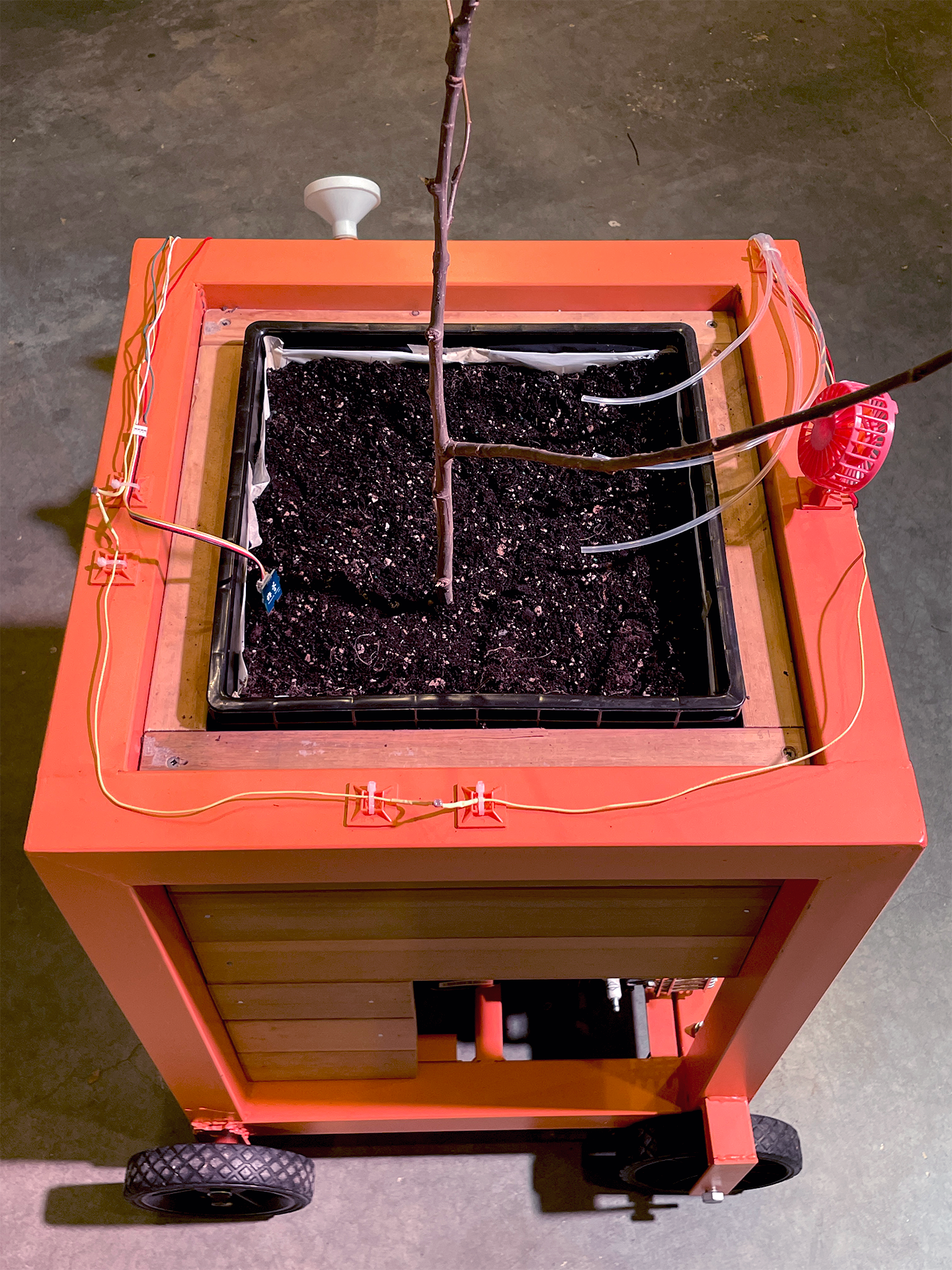Dysfunctional Garden (2023)
What tools do people need? What do they do? What do they look like? Is a garden a tool? Our cities are contaminated with a multitude of things, there is lead in our soil and we have PCB’s in our bodies. There is no purity. So we have to ask: what are our gardens for now? Yes, we can grow vegetables in them, and maybe they are safe to eat? Take soil samples. Yes, we can grow plants that we like to look at in them. Gardens give us lots of things. They grow. But they are equally defined by the death they need. Decaying organisms, decomposing plant matter, and maybe our tragically clever chemically inventions. In 50 years when fossil fuels are a distant memory and someone finds a canister of 10w-30, where does that go? This is my garden for destroying the past.
This sculpture is a model of an interactive, responsive, hybrid landscape that can help us understand landscape systems. It is based around the process of phytoremediation, which is the process of using plants to degrade or stabilize harmful compounds from both industrial and everyday practices.
The language of utility and tools is important to this object - from the casters to the Home Depot orange. Landscape architecture is rife with terminology like “ecosystem services” and others that functionalize the non-human world. By embracing the aesthetics of tools and utility in its form, this work questions the way we see a processes’ utility or functionality. In other words, Dysfunctional Garden highlights “disfunction” in landscape– pollution, ineffective heat management, cars, etc. and simultaneously enacts function through phytoremediation, responsiveness, and legibility.
See images below for full explaination of how this thing works:
![]()
![]()





